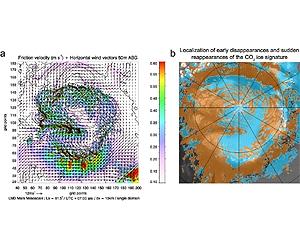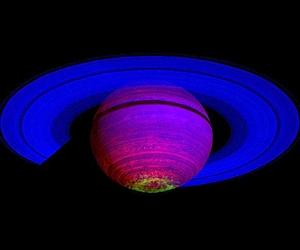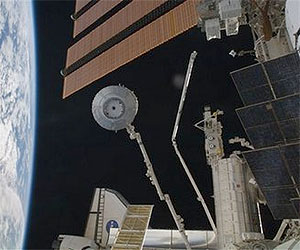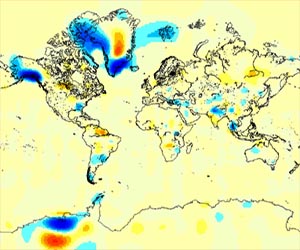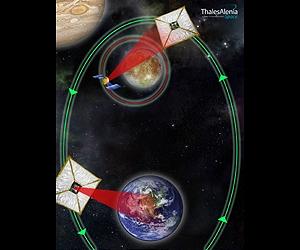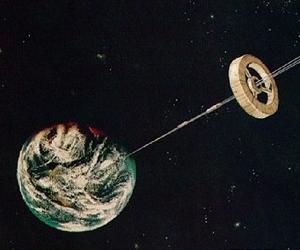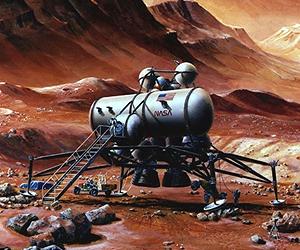In his 1979 novel 'The Fountains of Paradise' Science Fiction author Arthur C Clarke imagined a not-too-distant future where technology would have progressed so far as to allow us to engineer a material strong enough to be used as a cable connecting an orbiting satellite with the ground - a concept commonly referred to as 'The Space Elevator' or 'Tether'. It involves having a satellite in near-Earth orbit, with one tether stretched out into space, attached to a heavy object acting as a counter weight, against a line that is dropped to Earth from the satellite and secured to the ground.
The satellite remains fixed in synchronous orbit, and the counter weight would keep the line held taut.
A vehicle would be used to go up and down this line, much like an elevator, moving with relative ease to and from Earth orbit. As Clarke notes in his book, perhaps it is easier to think of the Space Elevator as being something stretching not upward toward the stars, but outward... that is, 35,000 kilometers outward.
The idea is not originally Clarke's however, although he certainly brought it to widespread attention in 1979 with the publication of his novel; the Space Elevator it has its roots more in science fact than science fiction.
The key idea behind it dates back to 1895, when a Soviet Rocket Scientist named Konstantin Tsiolkovsky - inspired by the Eiffel Tower - proposed an idea for building a solid free-standing tower from Earth's surface, reaching up 35,000 kilometers into space. He proposed that from the top of this tower, objects could be launched into space with relative ease into orbit.
However the lack of a material strong enough to support its own weight at such a height proved the concept beyond human capability. Still, the underlying idea of simply connecting ground and sky, as opposed to travelling from ground to sky, stuck.
Later, in 1959, leading Soviet Engineer called Yuri Artsustanov followed on from Tsiolkovsky's work when he conceived of the Space Elevator as we think of it today.
It is worth mentioning that Artsustanov drew on not just one but two concepts of Tsiolkovsky's - the huge tower reaching up into space, and the geostationary satellite, theorized by Tsiolkovsky in his 1903 work 'The Exploration of Cosmic Space by Means of Reaction Devices'.
This concept was further developed by Clarke himself in 1945, as an idea for communication satellites in geostationary orbits. This led to the obvious: the Satellite Television, GPS, etc, that we all take for granted today.
The extent of the impact Tsiolkovsky's work had on the early thinkers of the twentieth century is obvious - the most famous example of his influence might well have been the successful launching of Sputnik into space; showing that a geostationary orbit could be sustained by a man-made object. This allowed Artsustanov to base his concept of a Space Elevator in known truth - making it a more viable idea.
The attraction of the Space Elevator concept is not only how environmentally friendly it would be, but also how cheap it would be compared with current rocket technologies with the cost of sending anything up into space at roughly $20,000 per lb. Using the Space Elevator technology would be many times less than that.
Another factor is the level of public interest. People need something new to get excited about. Since the heydays of the Space Race in the 50's and 60's, public interest in leaving our planet has waned severely.
Perhaps that is partly due to the fact that we stopped heading to the moon and seemed more content remaining within Earth's orbit.
It could be because of the amount of time it takes to plan, and implement each separate mission; losing public interest in the waiting. And surely the reality of how much each mission into space currently costs is a factor also.
With the Space Elevator, we could travel from a point on Earth's surface into space, without the need for rockets, and at a dramatically lower cost. It would also be safer; removing the danger involved in riding an over-sized firework.
We could ferry supplies to an orbiting Space Station such as the ISS with ease. Even the ability to launch Satellites and Space Probes without the need of a rocket would be money well saved. Indeed the uses of the Space Elevator concept, and the opportunities that it opens to us, are immense. The technology would have a profound effect on not only the way that we reach space, but on what we do next.
Imagine a Space Elevator not only on Earth, but on the Moon as well, helping us to establish and maintain a Moon Base on the lunar surface. Perhaps even ferrying processed lunar ore to awaiting transports to bring back to Earth. And what of Mars?
The problem with a manned mission to Mars is the difficulty of establishing a base on Mars, and the logistics of getting back off of the surface. With a Space Elevator on Mars, a single ship could be sent to Mars and left in orbit whilst the surface is explored. The astronauts could then return to the ship via the Elevator, and head back to Earth.
The other proposed use of the Space Elevator concept, is in using the tethers to slingshot objects away from Earth into space. With the counter weight at one end of the tether, and for example a space probe at the other, the tether would transfer momentum to the probe, throwing it away from Earth at great speed.
This would not only negate the need for a probe to circle the Earth continuously until it had picked up enough speed to break away from Earth's gravity, but it might also mean that a probe's journey into deep space might be that much quicker, given the kick start.
There are several drawbacks to building a Space Elevator, the biggest of which is the production of a material that is suitable to be stretched tight over tens of thousands of kilometers, and endure great weights and strains from various forces. The other is the immense cost of actually getting such a 'construction' built.
However, there has recently been a resurgence of interest in the concept, and amongst several ongoing projects to build a Space Elevator is a recent announcement by Shuichi Ono, Chairman of the Japan Space Elevator Association, of their intent to build a Space Elevator with a trillion yen price tag.
Only the future will tell if such grand plans come to see fruition.
It is very clear that if we want to go back into space, and send people like you and I there, then we need to make travelling to space as cheap and as easy as possible. We cannot continue to rely on rocket technology, which is hundreds of years old, and far too expensive (the average cost sending the Space Shuttle into space is around about $450 Million).
We need to use technologies that can get Mankind to and from Space cheaply, quickly, and regularly. The development of new, strong materials that will allow us to build things like the Space Elevator will be a major factor in allowing us to do that. Surely the key to getting Mankind back into space is to make space a tourist attraction and allow companies to make money by taking them there.
In much the same way that airlines and jets offer to us the prospect of travelling anywhere on the globe, in the future they must be able to offer trips into space, the moon, and perhaps other planets. And they will not do this by using rockets.
A rich elite may be able to afford such trips in rocket-powered craft, but not the everyday men and women who have spent their lives looking up at the night sky and wishing they could reach out and touch it.
To open space to the masses, travel to it must be cheap and safe, and we must be able to send one trip after another. Links from the surface to the stars, and the advances in Science and Engineering that will make them possible, will help make going into space a realistic dream that will not be confined to only the super rich.
In the near future, perhaps within our own lifetimes, such trips might be as simple as riding a train... they might even be just as cheap.
www.spacedaily.com

